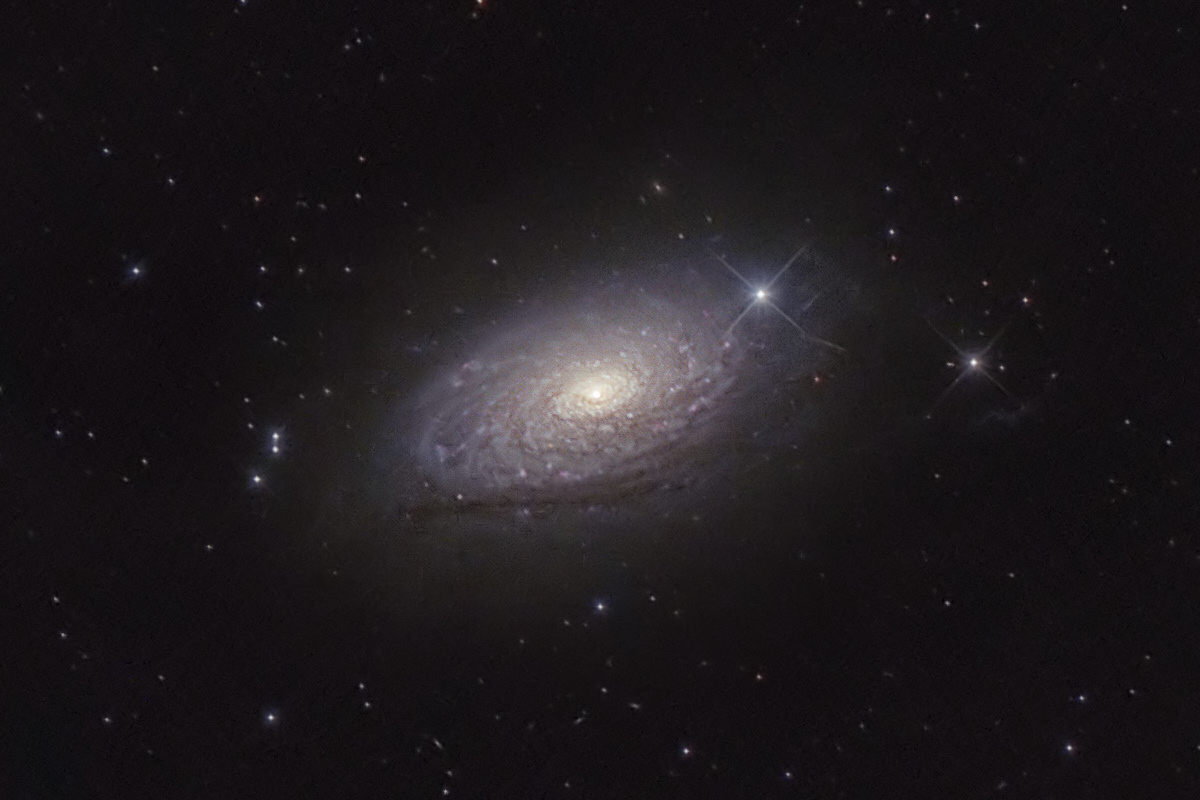
M63, nicknamed the Sunflower Galaxy, is a bright galaxy in Canes Venatici which was discovered by Pierre Méchain in 1779. Méchain was a co-worker of Charles Messier and entered the newly found object as number 63 in the famous Messier catalogue.
M63 is a spiral galaxy of the Hubble type Sbc. The designation Sb refers to the inner region, where the spiral arms are tightly wound around the core. Sc describes the outer, less tightly wound spiral arms. There are also numerous bright H II regions, i.e. extended emission nebula within the outer arms. The mottled appearance of its spiral arms makes M63 a prototype of the so-called flocculent spirals.
Infrared observations showed that M63 possesses essentially a two-armed spiral structure. Spectroscopic observations led to a density in the core region of the galaxy which is about 150 times higher than average. An outgoing stream of material originating from the core was also discovered. The gas flows to the west and spreads out in a cone. This indicates a slightly active galactic nucleus.
In May 1971, a supernova of Type Ia (SN 1971I) was discovered near the core which reached a maximum brightness of 12.1 mag. The distance of M63 is still fraught with a large degree of uncertainty. The generally accepted distance is 7 Mpc (23 million light-years), but you can find values between 20 and 40 million light years in literature.
Lots of small background galaxies can be found within this image, some of them very close to M63: Two small edge-on background galaxies are visible southwest of the brightest star at the western (right) edge of M63. The odd dust lane at the southern edge of M63 leads to a faint dwarf galaxy to the west (below the 2nd brightest star) which is about to be swallowed up by M63!
 M63 - Sunflower Galaxy, the full frame of this photograph.
M63 - Sunflower Galaxy, the full frame of this photograph.
Exposure Data